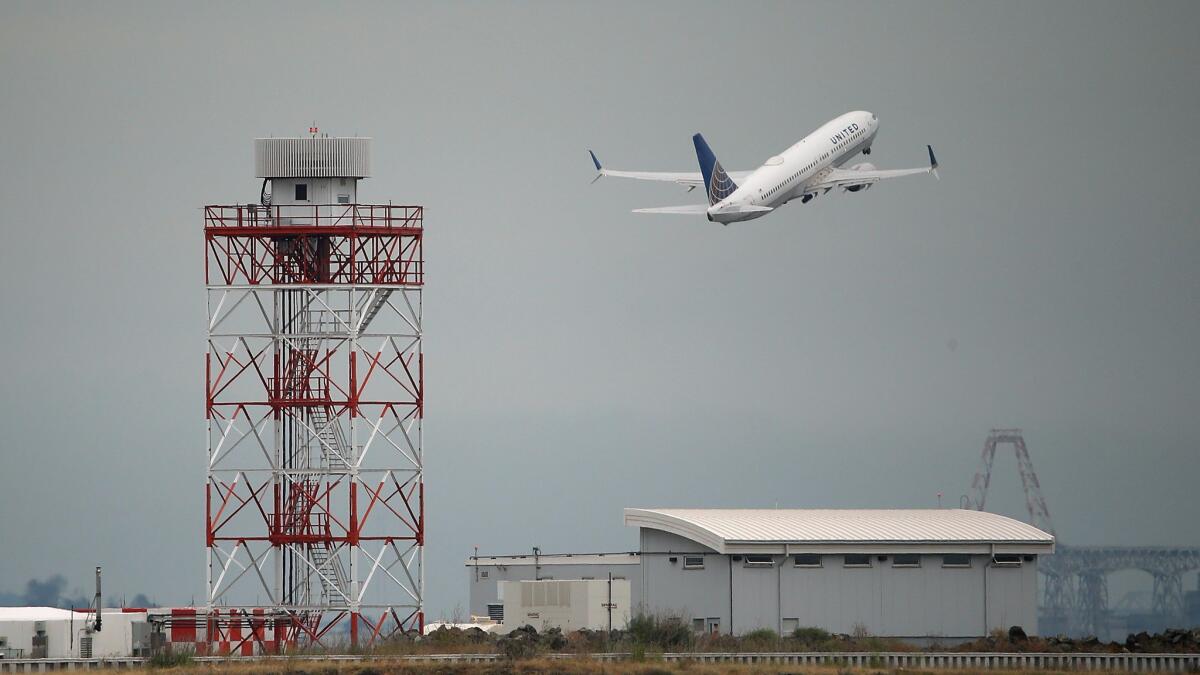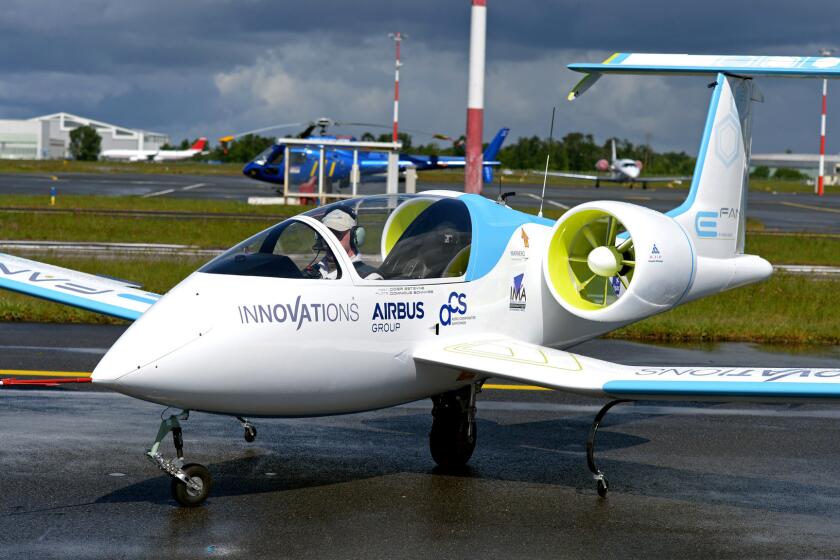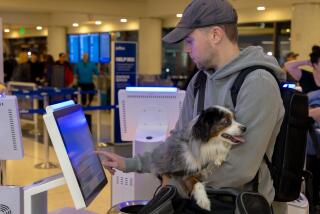Flight shame: Airlines are under rising pressure to cut their carbon emissions

When cyclist Anna Hughes stopped flying 10 years ago, it seemed like a radical idea. But now the founder of Flight Free UK has convinced thousands of people to join her in her bid to mitigate the climate impact of air travel.
Her campaign is just one part of a no-fly movement that is spreading rapidly across Europe and has given birth to a new phrase: flygskam, Swedish for “flight-shame,” which means feeling guilty about jetting off on vacation. “It has become a social norm that you think ‘holiday, you think ‘flight,’” says Hughes, who no longer goes anywhere that cannot be reached by bike, train or boat. “Most people are unaware of how flying affects the environment.”
That awareness is growing fast, though, as climate concerns have sparked a public backlash against flying that would have been almost unthinkable even a year ago. One of its most prominent advocates is Greta Thunberg, the 16-year-old Swedish activist who, having forsworn air travel, arrived in New York in an emissions-free yacht to attend a climate summit this month.
For airlines, the sudden takeoff of this movement presents a potentially dangerous challenge. Airline passenger growth shows signs of weakening in countries where flygskam is catching on. There was a 3% fall last year in the number of passengers for domestic flights going through 10 of Sweden’s state-owned airports, compared with the year before. The movement has not only taken aim at summer holiday flights, but also at airport expansion plans including Heathrow in London.
“This is an existential question for us,” says Rickard Gustafson, chief executive of Scandinavian Airlines (SAS), which is based in Sweden. “If we don’t clearly articulate a path to a sustainable aviation industry, it will be a problem.”
He says the issue of passengers’ attitudes to emissions was not considered a priority when he brought it up at the board of the International Air Transport Assn., on which he sits. But that has changed. “Six months later this was a hot topic,” says Gustafson.
Even if it is not yet hitting the bottom line, airline executives have begun to take the impact of emissions and climate risks more seriously. “Aviation needs to reinvent itself,” admits Johan Lundgren, chief executive of EasyJet, the European low-cost carrier.
The problem for the aviation industry is there are few technological solutions available that will help it reduce emissions and therefore address the potential consumer backlash.
“The basic trouble is that humankind has not worked out how to put a passenger jet on a long-distance flight yet without burning through something on the order of 100 tons of fossil fuels,” says Mike Berners-Lee, a carbon footprint specialist and professor at Lancaster University. “We have to bite the bullet on aviation, because we just don’t know how to do it in a low-carbon way.”
Airlines account for about 2% of carbon dioxide emissions globally. But the headline figures obscure the broader impact of air travel. When planes fly through the sky they also emit other substances that have a significant warming effect — such as nitrogen oxide and contrails, the long thin clouds of frozen vapor that are visible from the ground.
A growing body of research shows that the climate impact of airplanes is about twice as much as their carbon dioxide emissions alone would suggest — closer to 5% of human-caused warming.
Volker Grewe, professor of atmospheric physics at the German Aerospace Centre, says these “non-CO2 effects,” such as particle emissions, nitrogen dioxide and contrails, are a major contributor to the warming impact of planes.
“Aircraft are flying at higher altitude of 10 to 12 kilometers and whatever emissions they produce at that altitude remain longer in the atmosphere,” he says. “That is the big difference between aviation and surface transportation, which doesn’t have these additional effects.”
Some aviation executives have been trying to focus attention on emissions for at least a decade. Iata, the industry body, made a commitment in 2009 that the entire industry would halve emissions by 2050, relative to 2005 levels.
Some airlines, especially in European countries with particularly environmentally engaged customers, have made their own specific pledges. SAS has said it will cut emissions by 25% by 2030 and is aiming to run domestic flights on biofuels.
IAG, which owns British Airways and Spain’s Iberia, has pledged to invest $400 million in developing alternative fuels over a 20-year period, while United Airlines has said it will spend up to $2 billion annually on fuel-efficient aircraft and is working with biofuel producers.
Dutch carrier KLM even launched a campaign urging passengers to fly less. It includes tips such as “consider making video calls instead of meeting face to face” and “explore other travel options” like the train for shorter trips.
With the rise of flight shame, airlines are racing to find an answer for how to decarbonize and reduce their climate impact. But the challenge is that there are no easy ways to reduce emissions meaningfully — at least not in the near term.
To get supersonic business jets off the ground, Aerion Corp. is building planes that don’t go ‘boom’
Plans to launch supersonic commercial jet travel have long been hampered by a U.S. ban on such flight over land.
Some airlines, including IAG, believe one of the most promising areas is alternative, low-carbon fuels, which could be used in existing aircraft but with a lower carbon footprint. These include biofuels, which can be made from plants, waste or algae, and synthetic fuel that can be manufactured using renewable energy. Others are pinning their hopes on electric aircraft and hybrid battery-fuel designs.
At present, the only one of these technologies that is being used commercially is biofuels, albeit at a very small scale. In Southern California, Paramount-based AltAir Fuels supplies United Airlines with biofuel made from agricultural waste. In the Bay Area, United has also partnered with Fulcrum BioEnergy of Pleasanton, which is developing waste-to-fuel refineries.
“We see this as the future in this space,” says Aaron Robinson, senior sustainability manager at United. He is optimistic about using waste for biofuels given that it is cheaper to develop than crops.
However, the disadvantage of biofuels is that they are still much more expensive than regular fuels, and would face serious land constraints to being scaled up. At present, biofuels can be manufactured on a small scale using agricultural and household waste, but to reach the level of production that would have a significant impact on aviation emissions, much more land would be needed to grow the crops that would be converted to biofuel.
As a result, many environmentalists are dismissive of biofuels as a long-term solution, particularly because the world population is growing, and devoting more land to biofuel crops would reduce available acreage needed for food crops.
“If you were to replace all today’s aviation fuel with biofuel, with first-generation biofuel, it would be at the expense of 2,100 calories per person per day for everyone on the planet,” says Berners-Lee. “It would take almost all of humankind’s calorific requirements .... So that is absolutely not a solution.”
There is one area where airlines have managed to make considerable progress in reducing emissions — by improving the efficiency of airplanes. United, for example, says it has improved its fuel efficiency by 45% since 1990, thanks in part to more efficient planes.
However, these gains have been outstripped by the total rise in global air travel — airline carbon dioxide emissions in Europe increased 26% between 2013 and 2018, according to the EU. And Iata predicts annual passenger numbers will double to 8.2 billion by 2037.
Thousands of electric cars are on the road, with many more set to join them over the next few years.
Electric and hybrid aircraft could generate another major reduction in emissions. Several of the industry’s biggest manufacturers, such as Boeing and Rolls-Royce, are working on electric-powered aircraft, including hybrid planes that run on a combination of fuel and battery power.
At this year’s Paris Air Show, Israel start-up Eviation unveiled an electric aircraft taxi called Alice that can carry nine passengers up to 1,050 kilometers.
EasyJet is also confident about these technologies, which tend to be suitable for the type of short-haul flights that the low-cost carrier specializes in. The company is advising Los Angeles-based start-up Wright Electric as it designs an electric plane that could serve the airline for flights of less than 500 kilometers.
“We know what we think would work for EasyJet, so that’s why we’re looking at electrification and hybrid,” says Gary Smith, director of operations transformation at the carrier.
Budget carriers such as Ryanair, EasyJet and Wizz Air point out that their flights tend to be some of the most efficient, in terms of CO2 emissions per passenger per kilometer, because they have newer, fuel-efficient aircraft, no first-class service and are usually full.
However, the total emissions for the budget carriers are still high. EU data this year revealed that Ryanair was Europe’s 10th-biggest polluter in 2018. The other nine were power plants.
Electric aircraft are not going to be available anytime soon, and the heavy batteries required for electric aircraft mean that they will not be suitable for long-haul flights. Willie Walsh, chief executive of IAG, — whose flights include a relatively large proportion of long-haul trips — says electric and hybrid technologies will not be relevant to the business for another 25 to 30 years.
Flygskam activists are growing more impatient with an industry which has set lofty objectives but does not yet have the tools to meet them. Without solutions that can reduce the climate impact of flying in the immediate future, they say that people just have to fly less.
“We are really seeing a growing no-fly movement, and that is because, even though there might be some technological solution in the long-term horizon, we really do have to tackle the growth that is happening right now,” says Lucy Gilliam, an aviation and shipping expert at Transport and Environment, a Brussels based non-profit group.
The financial impact of flight shame has so far been limited: Global air travel is still growing healthily, driven by demand in Asia — particularly China. But investors are starting to pay attention — during the latest round of corporate results in the sector, environmental issues were among the most prominent questions for executives.
Daniel Roska, analyst at Bernstein, says there is often a discrepancy between people’s vocal support for less pollution, and their willingness to actually reduce their air travel habits. But governments could still use emissions concerns as a pretext to increase air taxes in the future, he says.
“I expect air travel to become more expensive, and this in turn will reduce the cheapest, least valuable demand in the market,” says Roska. “Likely it will lead to a period of slower growth for aviation in markets that push the emissions agenda.”
© The Financial Times Ltd. 2019. All Rights Reserved. FT and Financial Times are trademarks of the Financial Times Ltd. Not to be redistributed, copied or modified in any way.
More to Read
Inside the business of entertainment
The Wide Shot brings you news, analysis and insights on everything from streaming wars to production — and what it all means for the future.
You may occasionally receive promotional content from the Los Angeles Times.











